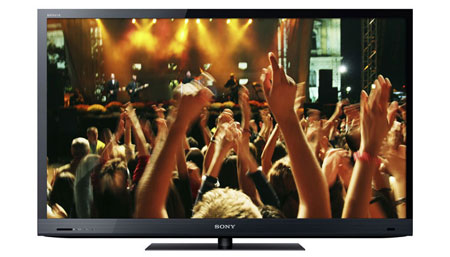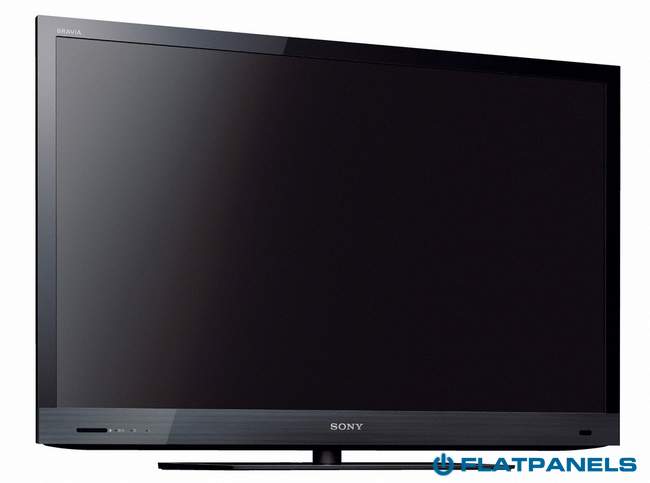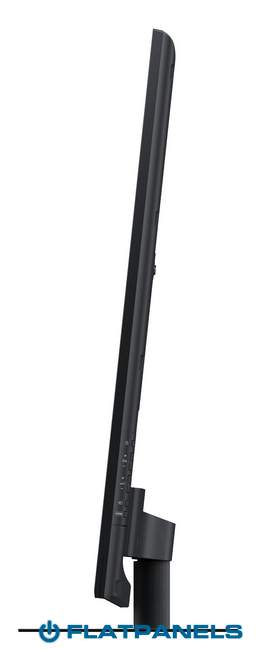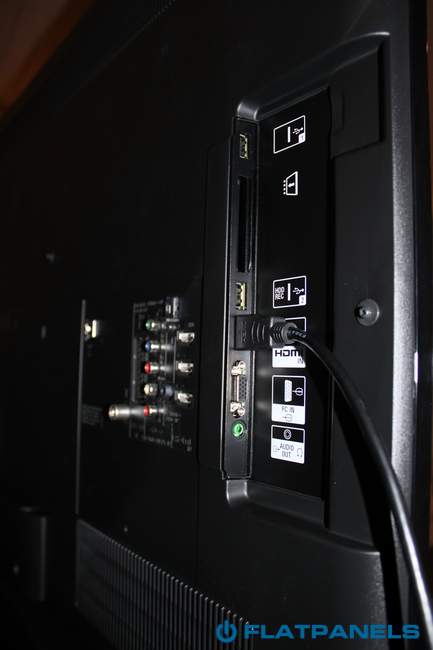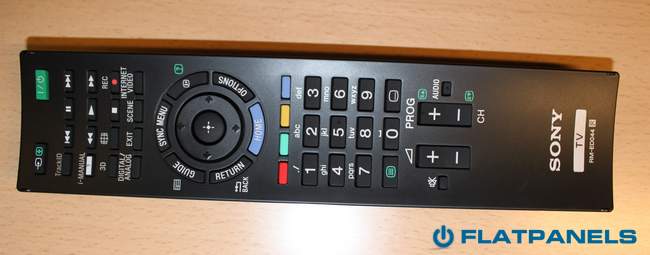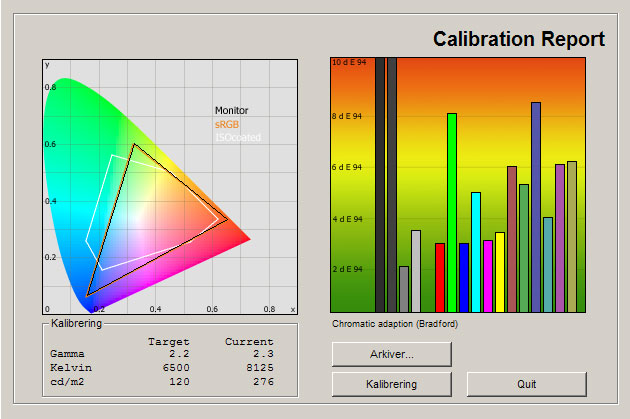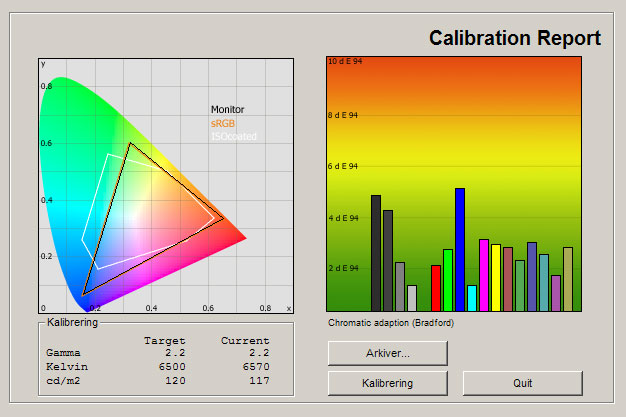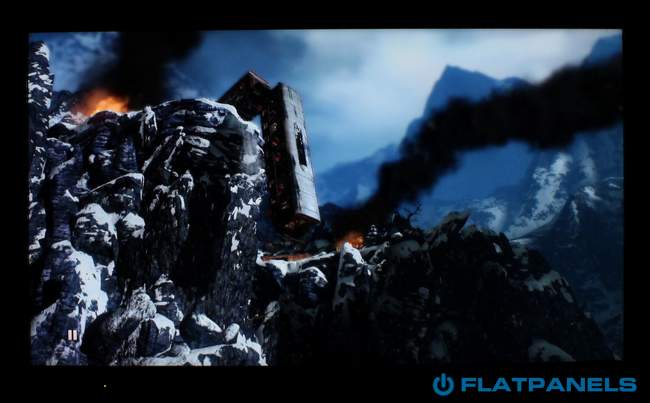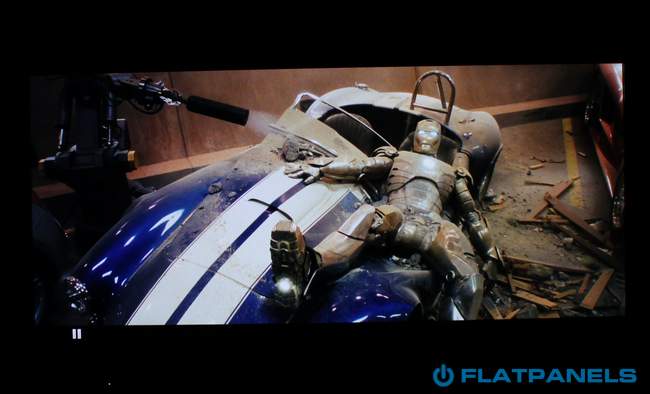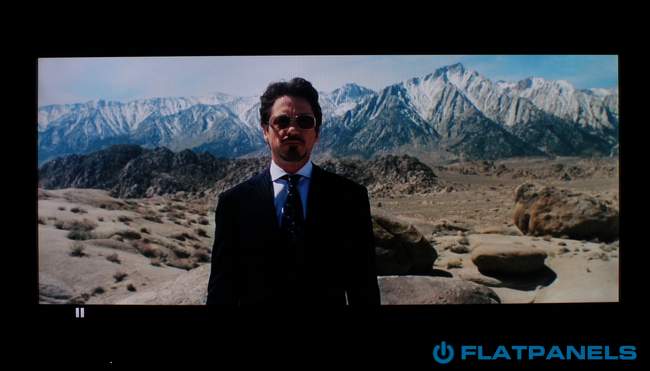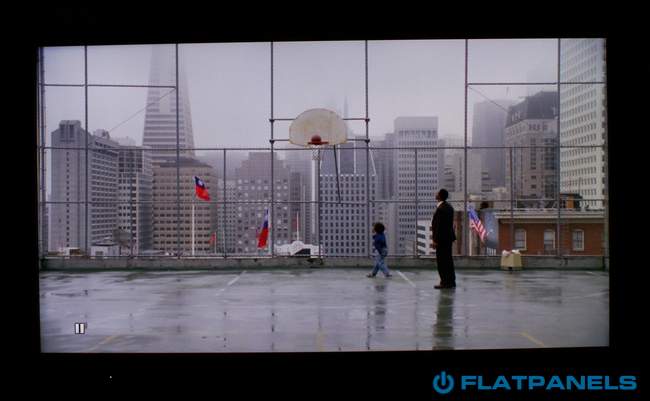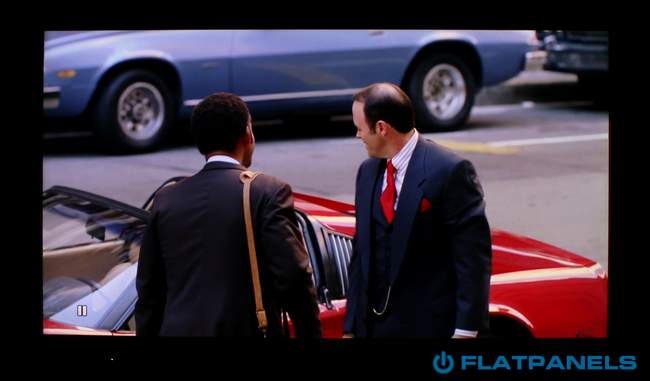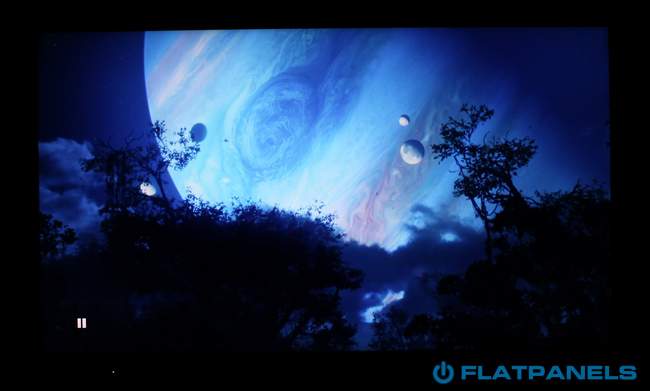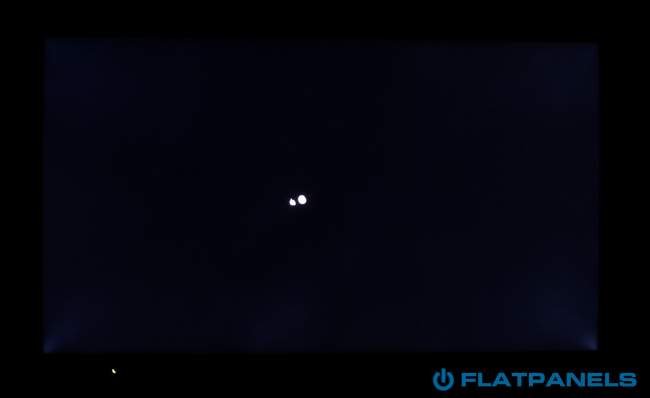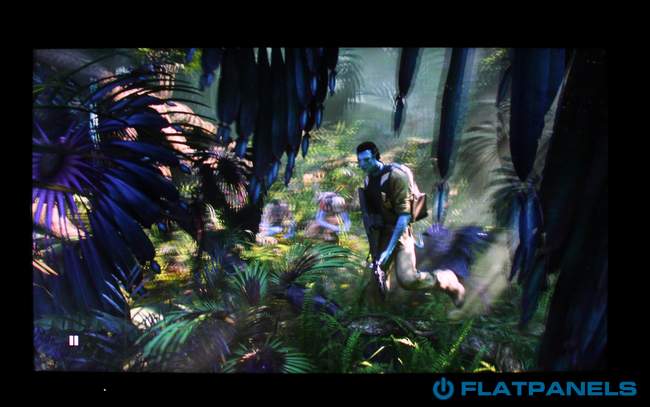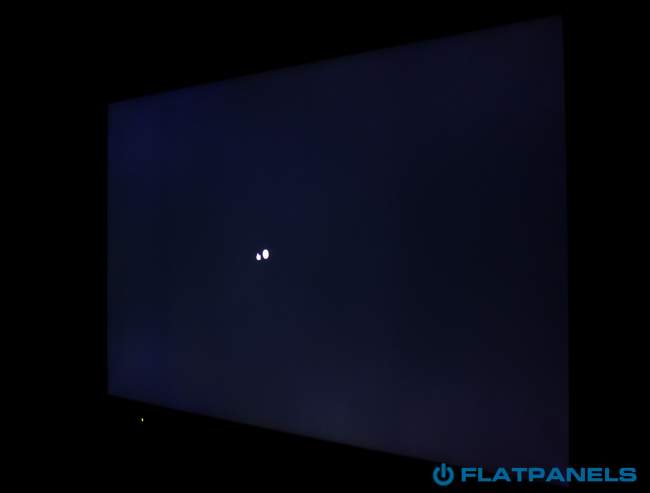Review: Sony HX729 / HX720
Sony HX729 (HX720) review
Sony HX729 (HX720 in Europe) is a slim Edge LED based TV with all of Sony’s key features, including 3D, Bravia Internet Video, the X-Reality Pro engine and a range of other multimedia features.
Sony HX729 looks like a worthy competitor to Samsung’s much-acclaimed D8000 LED model and Sharp’s LE830 model? But is the HX729 a real alternative. And does it offer some of the characteristics of the high-end HX929 TV? We’ll find out.
Sony HX729 (HX720) is available in 46, 55, and 65 inches in the US called 46HX729, 55HX729 and 65HX729. In Europe it is called HX720 and is available in 40, 46, and 55 inches called 40HX720, 46HX720 and 55HX720.
Subscribe to our Newsletter, RSS feed or twitter to receive notice when new reviews are online.
Size: 46" widescreen Resolution: 1920x1080 Response time: - Contrast ratio: - Brightness: - Viewing angles (H/V): 178/178 Panel type: LCD with Edge LED Wall mounting: Swivel stand: Dimensions (HxWxD): 66.0cm x 107.8cm x 4.2cm (without stand) Weight 14.4 kg Built-in speakers: Inputs VGA DVI (but possible to convert through HDMI)
Audio (type) (Audio in/out)
S-video Composite Component HDMI (4 inputs, 1 HDMI 1.4)
Outputs Audio (type) (1 output, headphones)
S/PDIF (optical)
Tuners Analogue DVB-T DVB-T2 (in some countries)
DVB-C DVB-S2 Other Price and retailer:
| US retailer | UK retailer |
 |
Our first impressions
Sony’s HX range builds on a black design with a brushed metal bar look at the bottom. The stand is minimalistic and allows users to turn the TV to both sides.It is a slim TV with an expanded cabinet at the bottom for speakers.
Input and output connectors are located on the back and only a few of them point to the side, including two HDMI inputs. The antenna connector is not very cleverly positioned, however.
Test tools
Our TV signal is DVB-S (satellite) from Canal Digital and DVB-T (terrestrial). We also have an analogue TV connection. Testing is done with the DVE (digital video essentials) and Peter Finzel test DVD. Testing is also done with DVD, TV, Blu-Ray and Media center/PC.We use our own monitorTest. The software supports some of the traditional test patterns used to evaluate displays as well as some new and unique test patterns developed by the people here on FlatpanelsHD.
Sony PlayStation 3 is our Blu-Ray player.
All contrast measurements are based on the ANSI methodology.
Functionality
What is the most advanced remote control in the world? We do not know but Sony’s 2011 remote control certainly qualifies. With its abundance of buttons and confusing layout it is not exactly user-friendly. It is made from plastic and is light-weight, making it feel cheap.The TV is packed with multimedia functionality such as Bravia Internet Video (Sony’s internet platform), DLNA, USB playback and USB recording (in Europe). We have already gone through all these systems in a previous Sony review and please see the Sony EX720 review for more details and thoughts.
Also, see the Sony HX929/HX920 review for more details regarding the remote control Apps for smartphones.
Energy consumption
| Compare power consumption measurements on different TVs and monitors with our interactive power consumption applet here. |
 |  | |
| Standby | 0.2 W | 0.2 W |
| SD+HD | 87 W | 83 W |
| 3D | 90 W | 90 W |
After calibration I measured power consumption to 83 W, slightly higher than the typical 46-inch LED based LCD-TV.
Calibration on Sony HX729 (HX720)
Below you can see an out-of-box measurement on Sony HX729 (HX720) in the Standard picture preset without Eco mode enabled.| The graph says this: The number on the left is the delta value. Delta is a difference between two factors; here it’s the difference between the measured color on the panel and the actual color that is our target. |
Sony’s out-of-box picture settings are not much worse or better than the typical LCD-TV. Bright colors are oversaturated and dark colors are undersaturated. The color temperature was measured to 8125 Kelvin and is too high, making images appear too cold and bluish.
The brightness level was measured to 276 cd/m2, which is too high for casual use but we deactivated the Eco mode, which is part of the explanation. Sony has also added too much artificial sharpness – around especially text – in the Standard picture preset.
I switched to the Cinema2 preset and took a new measurement.
The Cinema preset is better but still not perfect. Gamma rises from 2.17 to 2.48, which means that dark colors are too dark, crushing details in some dark areas of images. The brightness level is still too high but, as said before, we have deactivated the automatic brightness sensor, and it is just a matter of adjusting the backlight setting in the menu. The color temperature is slightly too low, making pictures appear a tad too warm and reddish.
I now did a calibration on Sony HX729 (HX720). Here is my result.
After calibration we managed to improve color accuracy considerably by deactivating most of Sony’s advanced picture systems and by adjusting gamma and colors. Gamma is now close to our 2.2 target, except for in the darkest grey tones. The color temperature is very close to our target value of 6500 Kelvin.
Brightness was measured to 117 cd/m2 after calibration, which is fine for TV watching in the evening but slightly too low for daytime watching. There is a minor problem in this regard because if you want the scanning backlight system to improve response time you need to sacrifice some brightness. Even with the brightness setting maxed out, we only achieved the above-measured brightness level.
Below are my calibrated settings.
| After calibration | |
| Picture mode: | Cinema2 |
| Backlight | 10 |
| Contrast | 89 |
| Brightness: | 50 |
| Colour: | 50 |
| Hue: | 0 |
| Sharpness: | 50 |
| Colour temperature | Warm2 |
| Noise reduction | Off |
| Mpeg noise reduction | Off |
| Dot Noise Reduction | Off |
| Reality Creation | Off |
| Smooth Gradation | Off |
| Motionflow | Clear Plus |
| Film-mode | Auto 1/Auto 2 |
| Black corrector | Off |
| Adv. Contrast Enhancer | Off |
| Gamma | +1 |
| LED Dynamic Control | Standard |
| Auto Light Limiter | Off |
| Clear White | Off |
| Live Colour | Off |
| Detail/Edge enhan. | Off |
| R Gain | -2 |
| G Gain | -7 |
| B Gain | 0 |
| R Bias | -1 |
| G Bias | -1 |
| B Bias | +1 |
Notice: The Cinema preset is set with the Scene button on the remote control. The Clear Plus setting enables the scanning backlight system that improves response time but reduces brightness. Therefore we have increased the brightness setting to 10.
Picture quality on Sony HX729 (HX720)
| In this section I go through picture quality with the calibrated settings. |
Sony HX729 has a semi-glossy LCD panel with few reflection issues. The glossy bezel around the TV reflects is the real problem but I believe that Sony HX729 will please most users. It is a good match for a bright living room, although not 100 % reflection-free.
Color gradation is average and HX729 is not able distinguish every color in the dark end of the color gradients. In our color gradation examinations we saw “bands” in the dark areas and performance is not 100 % on par with for example Samsung’s D8000 model.
SD picture quality is fairly good and I enjoyed watching TV shows on HX729. Without the picture enhancement systems HX729 is able to reproduce natural and pleasant pictures. Some small issues degrade the experience somewhat but HX729 is a fairly good TV in this regard.
HD picture quality is great and detailing is high. Again, we experienced some issues in dark movie scenes but it is only relevant occasionally. Sony’s TV also detected 1080p24 signals without issues, providing Blu-ray movie lovers with the true cinematic experience. Motion resolution still leaves room for improvement, and plasma-TV are still able to reproduce a higher level of details in very fast movie scenes and games.
We moved on to examine response time and HX729 is fairly fast. It is not competing with direct LED based LCD-TVs that incorporated backlit scanning backlight systems but it compares to most Edge LED based TVs out there. We experienced some minor issues with overdrive trailing (halos around moving objects) but nothing serious. Response time is also fairly consistent during dark and bright color shifts, which is important.
The MotionFlow system now incorporates two different systems; frame interpolation that inserts new frames and scanning backlight that improves response time. The latter system is definitely a great addition but the first system is undesirable. Fortunately, Sony let users use the scanning backlight system without using frame interpolation by setting the MotionFlow setting to Clear Plus.
In the game mode we measured input lag to 32 ms, which is comparable to most LCD-TVs today. In the standard preset input lag is considerably higher, especially if the MotionFlow system is active.
Below I have measured black level and contrast.
 |  | |
| Black level | 0.09 cd/m2 | 0.06 cd/m2 |
| Brightness | 276 cd/m2 | 117 cd/m2 |
| Contrast ratio | 3067:1 | 1950:1 |
Contrast ratio +/- 100
After calibration I measured black level to 0.06 cd/m2, which is worse than on Sony’s cheaper EX720 model and worse than on Samsung D8000. Sony has incorporated a “local dimming” system but do not let yourself be fooled. This is impossible with an Edge LED TV so instead it dims light in a few zones controlled by the edge LEDs – that is why we have turned it off during calibration. Only Sony’s high-end HX929 model incorporates true local dimming. We had expected better black performance from Sony.
We moved on to examine shadow detailing and HX729 had some problems in this area before calibration due the slightly too high gamma in the dark grey tones. This is not uncommon on Sony’s TVs – and most LCD-TVs. After calibration we managed to improve shadow detailing and achieved a fairly good result. Only the 2-3 darkest shades of grey were impossible to tell from black.
Below I have examined the Sony HX729 (HX720) a completely dark room to see if it has clouding or backlight bleeding.
Our sample had some small light spots in the bottom corners and some clouding areas on the LCD panel. Unfortunately the light spots in the corners are a little distracting when watching movies with black bars.
3D picture quality on Sony HX729 (HX720)
| We used the PlayStation 3 and a 3D Blu-ray player to test 3D movies and 3D games. In this test I want to examine 3D depth, 3D picture quality, 3D crosstalk and finally include a small comparison to some of the other 3DTVs on the market. |
Sony HX729 is a so-called active 3DTV, which means that users require active shutter 3D glasses. These are bought separately and are quite expensive. For testing we used Sony’s standard 2011 glasses.
3D picture quality is fairly good and Sony has managed to reduce crosstalk considerably compared to their 2010 line-up. However, crosstalk is occasionally visible in games and movies. Some games introduce higher-levels of crosstalk on every TV because of a too low frame rate but HX729 is also guilty.
I am not 100 % pleased with the 3D performance but for casual 3D viewing I think HX729 is good enough, and competing with other active 3D LCD models such as the Samsung D8000 or the Sharp LE835. 3D detailing is also high, even during motion.
My main reservation about Sony’s 3DTVs is the glasses, however. Sony, Samsung and Panasonic are currently developing a standard for 3D glasses but at the moment Sony TVs require Sony’s own proprietary 3D glasses - and they are not very good. The moment you tilt your head only slightly, you will notice that the 3D effect disappears. It happens with other 3D LCD models, too, but in Samsung, Panasonic, and Sharp’s case 3D pictures gradually become darker – not unwatchable.
PC and Media Center
In order to achieve 1:1 pixel mapping you need to select the aspect ratio called “Full" in the TV settings.Viewing angles
We experienced some color shifting on HX729 and colors tend to loose some intensity and vividness from the side. I have taken some pictures below to show this phenomenon.The main problem, however, is that black depth is reduced when the LCD panel is viewing form the side. This is a very common problem with LCD-TVs.
Sound quality
The speakers are hidden but a small bump to the backside of the cabinet reveals the location. The speakers are not particularly good, though. The bass is weak and I would have preferred some more powerful midtone reproduction as well. Like most TVs Sony has integrated a clear voice control - and it helps.For movies, games and music I recommend separate speakers.
Conclusion
Sony HX729 (HX720 in Europe) incorporates Sony’s full Bravia Internet Video platform but Sony is not allowing users to download their own TV Apps. We understand that Sony has invested their Smart TV efforts into the Google TV platform but right now Sony’s Smart TV offerings are not very arousing. And the remote control is still a lost spaceship.When it comes to picture quality, HX729 is a decent performer in SD and HD. It has no critical problems but it just never really takes off. It never comes really close to its high-end HX929 brother and it never really distinguishes itself from the cheaper EX720 model. Actually, HX729 is bested by the cheaper EX720 in some areas, such as black depth. 3D picture quality is on par with other similar-priced 3D LCD-TVs but we are not impressed by Sony’s 3D glasses that erase the 3D effects when you tilt you head only a few degree to the side.
So where does that leave the HX729/HX720 model? It is still a very good TV, no doubt, but it does not come close enough to the high-end HX929 model and the EX720 looks like a better value-for-money proposition in our eyes.
Price and retailer:
| US retailer | UK retailer |
 |
 |  |  |
| Fairly good picture quality | Black depth not as good as expected | Living room |
| Response time | Smart TV platform not very good | Home Cinema |
| 3D detailing | Inputs point out towards wall | |
| 3D effect gone when head is tilted |
Subscribe to our Newsletter, RSS feed or twitter to receive notice when new reviews are online.

